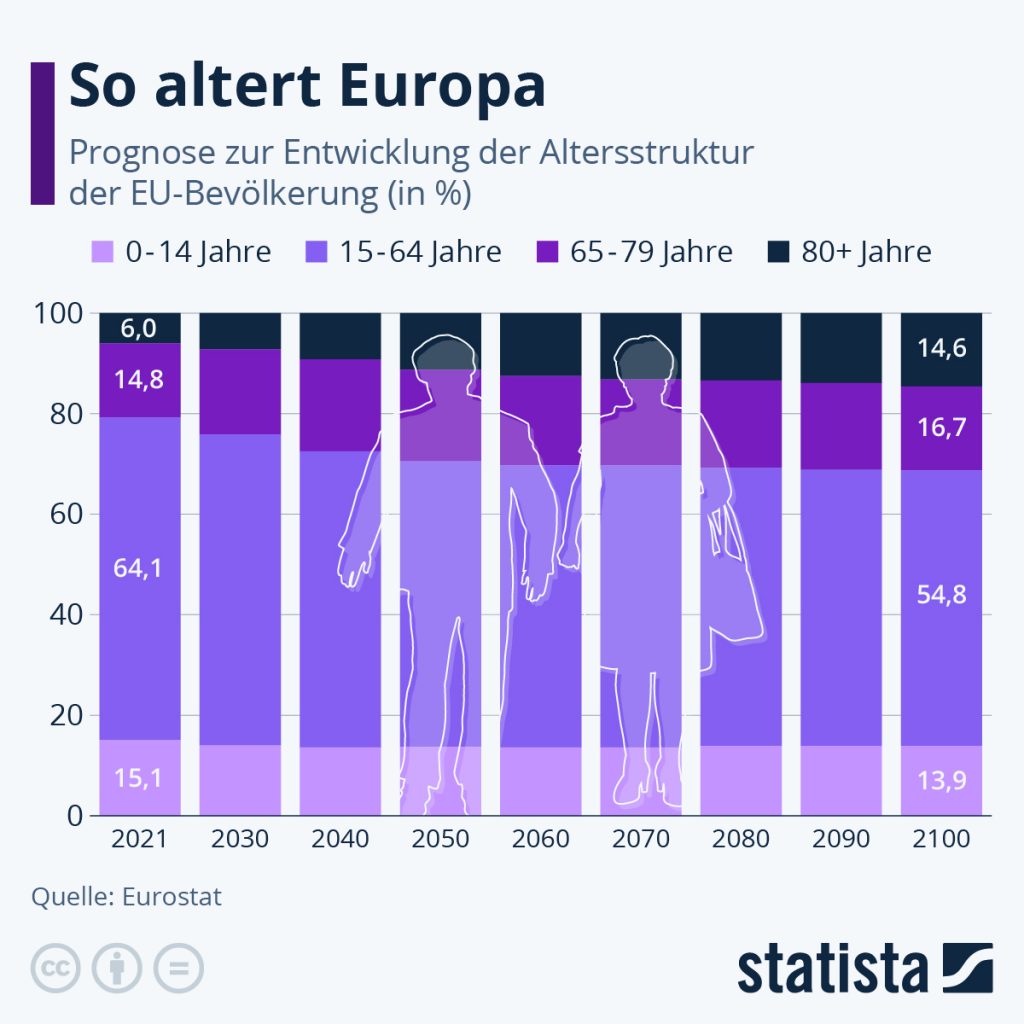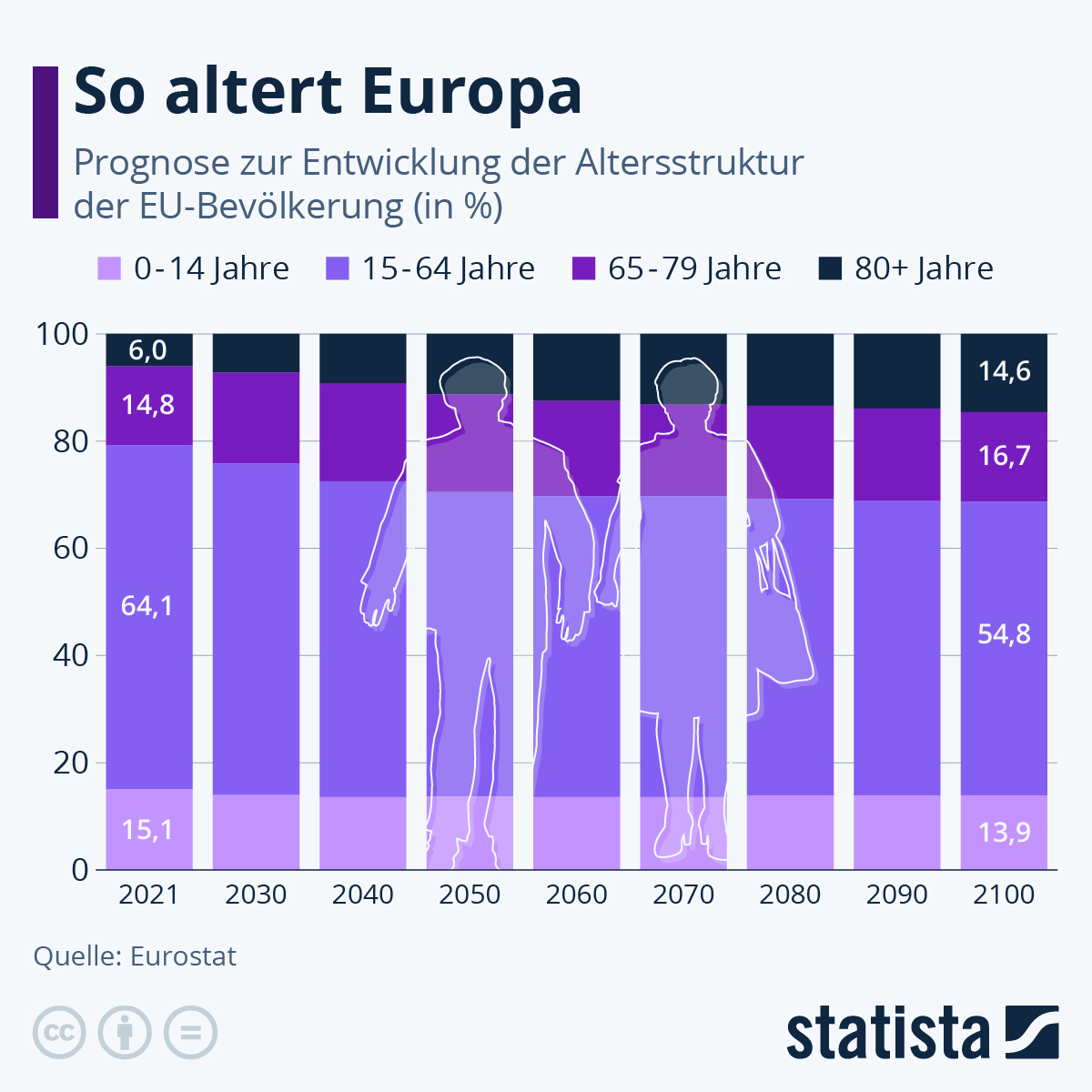
Europe is facing serious demographic changes. In the period from 2021 to 2100, the share of the working-age population is projected to decrease, while older people are projected to account for an increasing share of the total population. The Statista graphic illustrates this upcoming development based on the forecast of the Statistical Office of the European Union (Eurostat). The percentage of people over 80 in the EU population will therefore increase two and a half times between 2021 and 2100, from 6.0% to 14.6%. The over 65s will account for 31.3% of the EU population by the end of the century. Currently, their share is only 20.8%. In contrast, the population group aged 15 to 65 years will shrink by around 10 percentage points over the same period.
The proportion of the population aged 65 and over is increasing in all EU Member States. The increase over the last decade ranges from 5.2 percentage points (pp) in Finland, 5.1 pp in Poland, 4.7 pp in Liechtenstein and 4.6 pp in the Czech Republic – up to 1.3 pp in Germany and 0. 7pp in Luxembourg.
The increase in the relative share of older people can be explained by longer lifespans – a pattern that has been evident for several decades as life expectancy increased at least until 2019. This development is often referred to as “aging at the top” of the population pyramid.
However, consistently low fertility over many years has contributed to the aging of the population, with fewer births leading to a decline in the proportion of young people in the total population. This process is referred to as “aging at the bottom of the population pyramid” and can be observed at the narrowing base of the EU population pyramid between 2006 and 2021.
This development is also evident in Germany, as this Statista graphic shows. According to this, in 1950 around every eleventh German citizen was in the 65+ age group. In 2019, this already applies to one in five. Demographic change is in full swing in Germany.
That’s why we now have to position ourselves well in terms of care, pensions, housing, poverty in old age, mobility, neighborly help, loneliness and a good life in the neighborhood with reliable local supplies.
Age-friendly city, the World Health Organisation project for independent living in old age can play an important role in the development of viable concepts!




